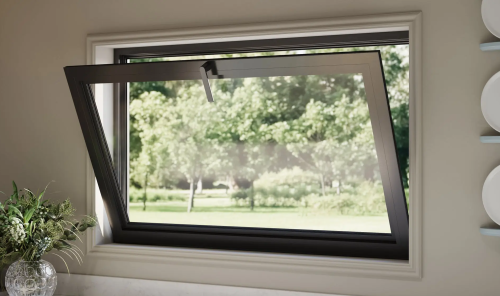Sliding doors are a beautiful and functional feature in many Australian homes, offering easy access to outdoor spaces and allowing plenty of natural light indoors. But over time, dirt, dust, and grime can build up in the door tracks, making them harder to open and close. If left unchecked, this buildup can lead to premature wear and even damage the rollers or track itself. That’s why knowing how to clean sliding door tracks properly is essential for smooth operation and long-term performance.
This blog will walk you through everything you need to know. From basic upkeep to how to deep clean sliding door tracks with common household items. This can apply to patio sliding doors, glass sliding doors, or internal sliders. These cleaning tips will help you maintain functional and clean tracks.
Why clean sliding door tracks?
Sliding door tracks attract dirt, dust, pet hair, leaves, and other debris due to their exposed, horizontal position. If you’ve noticed your door getting stuck, squeaking, or not closing smoothly, dirty tracks are likely the culprit.
Some basic benefits of regular cleaning of sliding door tracks:
- Prevents debris buildup
- Ensures smooth operation
- Reduces wear on rollers and tracks
- Helps avoid costly repairs
What you’ll need
Before you begin cleaning sliding door tracks, gather the following supplies:
- Vacuum with hose or handheld vacuum
- Small brush or soft-bristled toothbrush
- Paper towel or microfiber cloth
- Spray bottle
- Warm water
- Mild detergent or dish soap
- Baking soda
- White vinegar
- Clean cloth or damp cloth
- Silicone-based lubricant
How to clean sliding glass door tracks: Basic maintenance
If your tracks are only slightly dirty, a quick clean may be all you need.
1. Open the sliding door
Start with the door open to expose the entire track. If possible, remove the sliding door entirely to access every part of the track, especially for a deep clean.
2. Vacuum loose dirt
Use a handheld vacuum or hose attachment to suck up loose dirt, crumbs, and debris from the tracks. Pay close attention to corners and tight spaces.
3. Scrub with soapy water
Mix a few drops of dish soap or mild detergent into warm water. Dip a soft brush or toothbrush into the solution and gently scrub the tracks. Focus on areas with visible dirt or stuck grime.
4. Wipe with a damp cloth
Once the dirt is loosened, use a clean damp cloth to wipe away the residue. Follow up with a dry microfiber cloth to absorb any leftover moisture.
How to deep clean sliding door tracks
For a more thorough clean for reasons such as the age of the sliding doors or extended periods of time without cleaning, a deep clean will likely be required.
1. Sprinkle baking soda
Start by sprinkling a generous amount of baking soda along the entire track. Focus on areas with stubborn grime or grease buildup.
2. Spray with vinegar
Fill a spray bottle with equal parts white vinegar and warm water. Spray it directly onto the baking soda. You’ll notice a fizzing reaction which will be the baking soda breaking down tough dirt and gunk.
Let the mixture sit for 5–10 minutes to work its magic.
3. Scrub the track
Using a soft-bristled brush or toothbrush, gently scrub the track. The fizzing should help lift stubborn grime. Avoid using anything too abrasive that might damage the metal parts.
4. Wipe & rinse
Wipe away the mixture with a clean cloth. If any residue remains, dampen a microfiber cloth with clean water and wipe again until the track is free of dirt and cleaning solution.
Apply silicone lubricant for smooth sliding
Once your sliding door tracks are dry, apply a silicone-based lubricant to help the door slide smoothly. Unlike oil-based lubricants, silicone doesn’t attract dirt or dust which makes it ideal for this job.
- Spray a small amount along the inner edge of the tracks
- Slide the door back and forth to distribute the lubricant evenly
- Wipe away any excess with a clean cloth
Avoid using WD-40 or other petroleum-based lubricants, as they can cause grime to build up over time.
Regular maintenance tips
Now that your door tracks are clean, here’s how to keep sliding door tracks clean long-term:
- Vacuum monthly: Use a standard vacuum or handheld model to remove loose dirt.
- Wipe after rain: Moisture can carry mud and dust into door tracks, especially around patio sliding doors.
- Clean glass regularly: Dirty sliding glass doors often mean dust and debris are falling into the tracks.
- Inspect for misaligned wheels: These can scrape the track and cause further issues.
- Lubricate every 3-6 months: Keeps the door running smoothly and prevents sticking.
Common issues from dirty door tracks
Neglecting your sliding door’s tracks can cause:
- Sticking or jamming
- Scratches or damage to the door frame
- Roller deterioration
- Difficult to close doors
- Misalignment
If you’ve cleaned your tracks and your door still doesn’t slide smoothly, you may be dealing with worn-out rollers or a bent track, which may require professional door repair or a new door installation.
Eco-friendly cleaning alternatives
Prefer a natural approach to home improvement? Aside from baking soda and vinegar, some other alternatives include:
- Hydrogen peroxide (for tougher to remove stains)
- Lemon juice and baking soda (great for grease and mould)
- Reusable cloths instead of paper towels
Why you should pick Perth Window and Door Replacement Company for your sliding doors
At Perth Window and Door Replacement Company, we’ve been helping Perth homeowners with their sliding doors for over 41 years. Our range of high-quality glass sliding doors makes maintenance of them simple. We stand by our work with a 10-year warranty on both labour and materials.
Looking to upgrade your windows or doors? Contact us for a quote, or visit our Malaga showroom to see the quality for yourself.
FAQs
To remove a sliding door, you’ll usually need to lift it upwards out of the bottom track while tilting the base toward you. Start by removing any securing screws or stoppers at the top or side of the door frame. It’s often a two-person job due to the door’s weight, especially with glass. Always consult your door manufacturer's guide or call a professional if you're unsure, as incorrect removal can damage the rollers or frame.
To minimise debris buildup, you can install weather seals or draught stoppers, keep outdoor areas swept and clear, and consider adding a door awning or mat outside the entrance. Flyscreens can also help limit dust and leaves from blowing inside if the door is frequently left open.
Yes, using metal brushes or applying too much pressure can scratch aluminium tracks and dislodge or wear down rollers. Always use a soft-bristled brush or toothbrush for scrubbing, and avoid sharp objects or steel wool. Persistent grime should be loosened with baking soda and vinegar rather than aggressive scrubbing.



